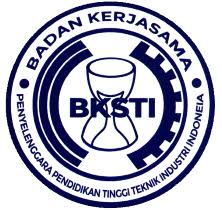Analisa Pengendalian Kualitas pada Proses Azodicarbonamide dengan Pendekatan Metode Six Sigma
DOI:
https://doi.org/10.30656/intech.v4i1.852Keywords:
Blowing Agent, DMAIC, Six SigmaAbstract
Foaming Agent company is a company engaged in the chemical industrial manufacturing, especially the additive industry for plastic and synthetic rubber. In the production process, the Foaming Agent Company has a problem with one of its products, Azodicarbonamide (ADCA). The number of defects caused becomes a problem primarily related to the course of production and the relationship with the customer. The research was conducted using the Six Sigma method by implementing DMAIC (Define, Measure, Analyze, Improve, Control). This study aims to identify the factors that cause defects and the most optimal choice of options to increase the level of sigma in the ADCA production process. Based on the results the most significant aspects that cause defects in ADCA products is Average Particle Size; 66.77% of the overall production defects. The sigma level that obtained before and after the improvisation is 3.68 and 4.03 with the average achieved savings per month are Rp.600 million. The results of the gradual decrease in defects showed that the options implemented at the improvisation stage were successful, but still needed improvisation so that the company's performance can be even betterDownloads
References
De Mast, J., & Lokkerbol, J. (2012). An Analysis of The Six Sigma DMAIC Method from The Perspective of Problem Solving. International Journal of Production Economics, 139(2), 604–614.
Dewi, S. K. (2012). Minimasi defect produk dengan konsep six sigma. Jurnal Teknik Industri, 13(1), 43–50.
Gaspersz, V. (2002). Pedoman implementasi program six sigma terintegrasi dengan ISO 9001: 2000, MBNQA, dan HACCP. Jakarta :PT. Gramedia Pustaka Utama.
Gijo, E. V, Scaria, J., & Antony, J. (2011). Application of Six Sigma methodology to reduce defects of a grinding process. Quality and Reliability Engineering International, 27(8), 1221–1234.
Hidayatno, A., & Afriansyah, B. (2014). Peningkatan Kualitas Potong Mesin Eye Tracer di PT. United Tractors Pandu Engineering dengan Metode Six Sigma. Jurnal Teknologi, 2, 1–11.
Kaushik, P., Khanduja, D., Mittal, K., & Jaglan, P. (2012). A case study: Application of Six Sigma methodology in a small and medium-sized manufacturing enterprise. The TQM Journal, 24(1), 4–16.
Lech, M. M., Hill III, T. D., Arvidson, A. L., Paddock, S. R., & Hussain, A. (2003, March 25). Quality management system with human-machine interface for industrial automation. U.S. Patent No. 6,539,271.
Linderman, K., Schroeder, R. G., Zaheer, S., & Choo, A. S. (2003). Six Sigma: a goal-theoretic perspective. Journal of Operations Management, 21(2), 193–203.
Supriyadi, S., Ramayanti, G., & Roberto, A. C. (2017). Analisis Kualitas Produk dengan Pendekatan Six Sigma. In Prosiding SNTI dan SATELIT 2017 (pp. D7-13). Malang: Jurusan Teknik Industri Universitas Brawijaya.
Supriyadi, S., Ramayanti, G., & Roberto, A. C. (2017, December). Analisis Kualitas Produk dengan Pendekatan Six Sigma. In Prosiding Seminar Nasional Riset Terapan| SENASSET (pp. 7-13).









.png)
.png)
.png)



.png)

.png)
